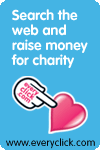Critical appraisal of the HIV trip- Kid's View.
Since, the major objective of the trip was to give to these children a clear understanding about HIV/AIDS, their answers to HIV questions were of great significance: 1. Name two methods/means a person can use to prevent AIDS
1. Name two methods/means a person can use to prevent AIDS
NB: Percentages do not add up to 100% because kids could name more than 1 option.
It is clear that abstinence and faithfulness (to your spouse) are the mainly known ways of prevention. This is not surprising as it is the mostly preached message in churches.
However the use of condoms was also significantly mentionned and it shows that some of the children have broadned their understanding beyond what is normally taught in church or at home (the usue of condom is associated with evil=sin).
Seeing every person as HIV positive may seem a bit strange, but it has its relevance. This is becasue people tend to tell who may or not be HIV positive by just looking at how they appear outside.
For example, fat and strong people can mistakenly be considered as HIV negative. Thus seeing everyone as HIV positive will help these kids not to rely on external appearances in deciding who may or may not be HIV positive?
 2. Name three ways a person can contract AIDS.
2. Name three ways a person can contract AIDS.Having unprotected sex and sharing needles and skin piercing ranks first and this is consistent with the National HIV prevention information strategy that kids may have come accross at school.
3. List of different lessons learnt from the trip.
This last aspect contrasts with the widely believed rural theory that stigmatizes HIV positive people.

The list continues including seeing nice houses and buildings, some administrative offices (Nyamasheke district offices), modern livestock, some crops (tea and coffee), boats, Bukavu and Kamembe Cities and ….a washing machine!!!!!!
Due to the culture of criticism developped by daily written assessment of the school meal, the children were also more than prepared to notice and report any imperfections in the preparation or execution of the trip.
4. Kids' critical appraisal of the trip.
They unanimously said it was good, nice and asking blessings to RSVP people wo organised and funded the trip.
Suggestions included requests to visit other places such as Nyungwe National Park, Kigali City (the country capital) and the National Museum.
To read a direct translation of kids' questionnaire and a few answers, please click here.
HIV Trip: Teachers's View. Nov 07 Newsletter Listings.
©CHARITY No:SC038526. CONTACT: 101 Willowpark Crescent, AB16 6XU. TREASURY: 4 Wrights Lane, Hilton, Aberdeen, AB24 4RY.



1 Comments:
Children questionnaire and answers from a child called Mr Ngabonziza Gervais, a P6 student
A. Questions relating to the trip to Airport
1. How do we call a place where planes set-off/land?
Answer: Airport
Top
2. How do we call an instrument used to measure the wind’s speed? Direction?
Answer: Anemometre and girouette (French version?)
B. Questions relating to Kibogora Hospital trip and talk about AIDS
3. In a hospital how do we call a place where they store medecines?
Answer: Pharmacy
Top
4. How many employees has Kibogora Hospital got?
Answer: 158
5. Between HIV1 and HIV2 which one is stronger? (or more virulent)
Answer: HIV1
6. Name three ways a person can contract AIDS
Answer:
- Having unprotected sex
- Sharing razors
- When a mother has HIV, she can transmit it to the baby
Top
7. Name two methods/means a person can use to prevent AIDS
Answer:
- Abstaining from having sexual intercourse
- Using a condom
8. Which cells does HIV damage:
a. Monocyte
b. Lymphocyte T4 or CD4 +
c. Lymphocyte CD8+
9. When a person is a HIV positive:
a.His/her body gets stronger to resists disease
b. They are more vulnerable to diseases such as zona, tuberculosis
Top
C.Question relating to Ntendezi Secondary School visit
10. What different studies "sections" has Ntendezi Secondary School got?
Answer: It has three sections: Biochemistry, Math-Physics, and Human Sciences
C. Suggestions and comments
Top
11. What did you learn from this trip?
This trip has enabled me to know many things; I have been able to know instruments used to measure the direction of the wind, to measure the rain quantity.
The trip has also introduced me to the goodness of being in a secondary school and it has encouraged me to work hard so that I will also go to secondary school.
I have also seen the airport and have been introduced to different instruments used in the hospital.
12. What can we improve on for future trips?
Answer: I don’t have anything to complain about. I went back with a lot of joy and increased knowledge
Top
Post a Comment << Home
©CHARITY No:SC038526. CONTACT: 101 Willowpark Crescent, AB16 6XU. TREASURY: 4 Wrights Lane, Hilton, Aberdeen, AB24 4RY.